#Energy Innovation
Text
Pass legislation to significantly expand transmission for clean energy NOW!
AN OPEN LETTER to THE PRESIDENT & U.S. CONGRESS
820 so far! Help us get to 1,000 signers!
Right now, there are at least 2,000 gigawatts of renewable energy waiting for permission to connect to power lines in the U.S., which is more than the total capacity of the country’s existing power plants. Wait times to connect new power plants to the grid can reach five years or more. Without rapidly improving transmission, the United States will not be able to achieve Biden's goal of 100% clean energy by 2035 or provide cheaper, more reliable electricity to American households. If the U.S. can’t build new transmission at a faster pace, roughly 80 percent of the emissions reductions expected from the Inflation Reduction Act–the largest climate legislation in U.S. history–might not happen.
That’s why I’m writing to urge Congress to pass legislation to significantly expand transmission for clean energy.
Multiple efforts are currently in play. Most recently in the House, Representatives Sean Casten and Mike Levin introduced the Clean Energy and Transmission Acceleration Act, (HR 6747) which would encourage the development of new transmission lines to carry renewable power where it’s needed while protecting the rights of communities to provide input on where lines are built and to benefit from their construction. I strongly support this bill.
But any legislation is better than none, and NONE of the bills proposed so far have been passed. This is not good.
Increasing access to clean energy will help tackle the climate crisis by ensuring the reliability of the grid and reducing consumers' bills. Renewable energies like wind and solar are quickly becoming the least expensive source of energy and we need to make sure as many people as possible get access to these clean, abundant energy sources.
Please pass a strong, fair transmission bill—like HR 6747—that prioritizes clean energy, climate change, and environmental justice. This is urgent; all of our children are counting on us to secure their futures. Thanks.
▶ Created on April 23 by Jess Craven · 819 signers in the past 7 days
📱 Text SIGN PMNVSR to 50409
🤯 Liked it? Text FOLLOW JESSCRAVEN101 to 50409
#JESSCRAVEN101#PMNVSR#resistbot#Clean Energy#Renewable Energy#Climate Action#Transmission Expansion#Green Energy#Clean Energy Now#Climate Change#Energy Infrastructure#Renewables#Climate Crisis#Energy Policy#Infrastructure Bill#Green Grid#Renewable Power#Energy Transition#Climate Legislation#Sustainable Energy#Clean Tech#Electric Grid#Energy Security#Energy Equity#Renewable Future#Grid Modernization#Climate Justice#Energy Innovation#Renewable Resources#Energy Efficiency
0 notes
Text
Unraveling the Power of Nuclear Fusion: A Journey into Clean Energy

Nuclear fusion, often hailed as the "holy grail" of clean energy, holds immense potential to revolutionize the way we produce electricity. As scientists and engineers delve deeper into the intricacies of nuclear fusion, we embark on a journey towards a sustainable and environmentally friendly energy future.
Understanding Nuclear Fusion:
Fusion Reaction: Nuclear Fusion is a process in which two light atomic nuclei combine to form a heavier nucleus, releasing a large amount of energy in the process. Unlike nuclear fission, which powers conventional nuclear reactors, fusion reactions generate energy by replicating the same process that powers the sun and stars.
Clean Energy Source: One of the most significant advantages of nuclear fusion is its status as a clean energy source. Fusion reactions produce no greenhouse gas emissions or long-lived radioactive waste, making it a promising alternative to fossil fuels and traditional nuclear power generation.
Advancements in Nuclear Fusion Technology:
Experimental Fusion Reactors: Over the decades, scientists and engineers have made significant strides in developing experimental fusion reactors capable of sustaining controlled fusion reactions. Projects such as ITER (International Thermonuclear Experimental Reactor) and the National Ignition Facility (NIF) are at the forefront of fusion research, aiming to demonstrate the feasibility of commercial fusion power.
Innovative Fusion Approaches: Researchers are exploring various innovative approaches to achieve nuclear fusion, including magnetic confinement fusion, inertial confinement fusion, and hybrid concepts. Each approach has its unique set of challenges and advantages, driving innovation and collaboration within the fusion community.
Potential Benefits of Nuclear Fusion:
Abundant Fuel Supply: Nuclear fusion utilizes isotopes of hydrogen, such as deuterium and tritium, as fuel sources, which are abundant and readily available. Unlike fossil fuels, which are finite resources, the fuel for nuclear fusion can be extracted from water and lithium, ensuring a virtually limitless supply.
Get More Insights On This Topic: Nuclear Fusion
#Nuclear Fusion#Clean Energy#Sustainable Energy#Fusion Reactors#Renewable Energy#Carbon-Free Energy#Energy Innovation#Future Technology
0 notes
Text
Thorium Power: The Future of Clean Energy?
What are your thoughts on thorium power? Share your insights and questions below!
[email protected] Fundamentals of ThoriumIntroduction to Thorium: A Lunar Dream on EarthUnderstanding Thorium: Properties and CharacteristicsThe Science of Thorium: Atomic StructureThorium in IndiaIndia’s Thorium Advantage: Reserves and SignificanceMapping Thorium in India: Locations and DepositsGlobal Thorium RenaissanceA Treasure Trove Unearthed: Thorium Reserves Around the…

View On WordPress
#Clean Energy#energy innovation#India&039;s thorium program#nuclear power#Sustainability#thorium fuel cycle#thorium power#thorium reactors
0 notes
Text
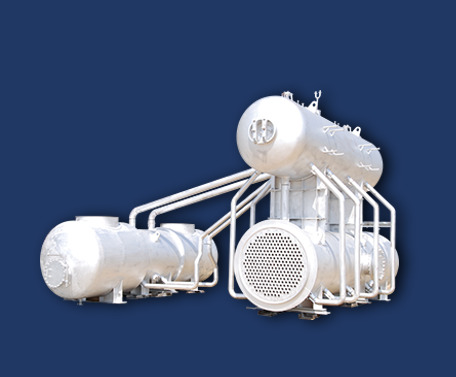
Waste Gas Fired Boilers Redefining Green Energy Solutions
Thermodyne we proudly introduce our cutting-edge Waste Gas Fired Boiler, a technological masterpiece that exemplifies sustainability and efficiency in the field of industrial heating solutions. Our waste gas-fired boilers, meticulously crafted with both precision and environmental consciousness, effortlessly convert industrial waste gases into a valuable energy source, minimizing environmental impact and operational expenses. Thermodyne's Waste Gas Fired Boiler stands as a beacon of innovation, providing a clean and environmentally friendly option for industries seeking dependable heating solutions.
#Waste Gas Boiler#Waste-to-Energy#Sustainable Energy#Green Technology#Environmental Efficiency#Energy Innovation
0 notes
Text
Energy Storage System: Redefining the Future for Undertakings and the Climate
Energy storage systems are becoming increasingly popular as a result of our world's rapid development and growing reliance on renewable energy sources like solar and wind power. Our current methods for storing and distributing energy are being altered by these energy storage systems, also known as ESS. We will explore in this blog post how energy storage systems are helping to preserve the environment and reshape the future of humankind.
Why do we need an energy storage system?
Energy storage systems help to overcome any barriers that exist between renewable energy sources and our constant energy requirements. They play an important role in addressing the challenges of energy storage by storing excess energy and delivering it when needed.
Benefits for Undertakings
Reliability: An energy storage system improves the dependability of energy supply for organizations. Continuous power is essential for assembling server farms and medical care offices. ESS guarantees that these undertakings are consistently ready, reducing free time and improving efficiency.
Minimal expense of proprietorship: Undertakings are continuously searching for ways of diminishing their activity costs. Energy storage solutions assist with diminishing energy bills by storing power while having a minimal expense. The energy storage system permits them to store an excess of energy during off-top hours when power costs are lower and use it during peak interest when costs normally take off.
Grid Independence: Energy storage systems have the potential to help projects become less reliant on the traditional electrical grid. This reduces their carbon footprint by helping businesses store their clean energy and gives them independence in the event of grid outages.
Benefits to the environment
Increase reliance on renewable energy: Energy storage systems assume a significant role in coordinating environmentally friendly power sources, like breeze and sunlight-based sources, into the lattice. They store overflow energy produced during positive weather patterns and deliver it when the sun isn't sparkling or the breeze isn't blowing, guaranteeing a steady and solid power supply.
Decreasing greenhouse gas emissions: By empowering the utilization of clean energy sources all the more successfully, energy storage systems contribute to a huge decrease in ozone and greenhouse gas emissions. This is vital to battle environmental change and protect the climate for people in the future.
Transformative Technologies
The universe of energy storage systems is developing quickly, as determined by smart grid joining and high-level control systems.
Smart Grid Integration
Grid Optimization: Energy storage systems are vital in making smart grids that can advance energy dispersion, lessen transmission misfortunes, and work on the general effectiveness of influence conveyance.
Energy Management System
Predict Analytics: In high-level energy, the executive’s frameworks are saddling the force of artificial reasoning and prescient investigation to upgrade energy use, limit squandering, and augment the advantages of energy stockpiling frameworks.
The Street Ahead
Energy management systems have previously taken striking steps in reclassifying the fate of energy age and utilization. Nonetheless, there is, as yet, critical space for development and advancement.
Network Scale Organizations: What's to come holds a guarantee for enormous-scope lattice arrangements of energy storage systems. These establishments can settle the grid, increase flexibility against natural disasters, and work with the change to create a cleaner, more reasonable energy environment.
Decentralized Energy: Energy storage systems are working with the shift toward decentralized energy creation. Networks and individual property holders can create and store their energy, lessening their dependence on unified utilities.
Conclusion
An energy management system (ESS) is a mechanical headway as well as a ground-breaking power that holds the way to a practical and effective energy future. They engage in ventures with unwavering quality and cost-effective investment funds while essentially adding to ecological protection. As developments keep on driving the development of ESS, the potential for a cleaner, greener, and more solid energy scene is progressively substantial. What's to come is splendid, and an energy storage system fuels it.
#hybrid power#sustainable tachnologies#clean energy solutions#energy innovation#green power#smart grid#EcoFriendlyTechnology#energyefficiency#FutureOfEnergy#EnvironmentalSustainability#PowerSystems#RenewableIntegration#HybridPowerGeneration#CarbonFootprint#ClimateAction
1 note
·
View note
Text
Power-to-X Revolution: Innovations and Investments
The global power-to-X market size is expected to reach USD 645.3 million by 2030. Power-to-X (P2X) technologies enable the integration of renewable energy sources, such as wind and solar, into sectors traditionally reliant on fossil fuels. This trend is expected to accelerate as countries increase their renewable energy capacity and reduce their dependence on fossil fuels. Simultaneously, the increasing deployment of renewable energy sources, such as wind and solar, provides a reliable and abundant source of electricity for power-to-X processes. As renewable energy costs continue to decline, the economic viability of power-to-X technologies improves.
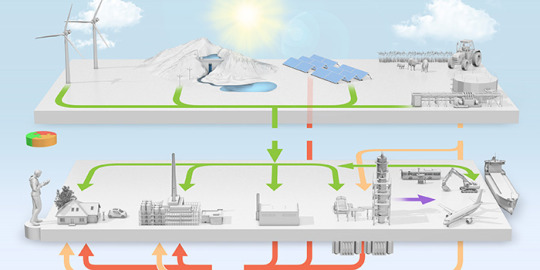
Power-to-X Market Report Highlights
The power-to-H2 segment led the market in 2022 accounting for over 40% of the global revenue owing to its capacity to integrate more renewable energy into these sectors, fostering the transition towards a low-carbon economy
The transportation segment held the largest revenue share of over 35% in 2022. Power-to-X technologies enable the production of low-carbon or carbon-neutral energy carriers, such as hydrogen or synthetic fuels, from renewable sources. Using these energy carriers, greenhouse gas emissions can be significantly reduced
The potential of power-to-X technologies in emerging transportation trends, such as hydrogen fuel cell vehicles, synthetic fuel, electric vehicles (EVs), and in shipping & aviation, with low carbon emissions, is immense
These technologies enable the integration of different industrial sectors within the energy system, fostering sector coupling. Excess electricity from renewable sources can be used to produce energy carriers, such as hydrogen, synthetic natural gas, or even synthetic liquid fuels, through power-to-gas or power-to-liquid processes
Europe held the largest revenue share of over 40% in 2022. As R&D efforts continue, the costs associated with PtX systems are expected to decline, making them more competitive and attractive for the European market
Gain deeper insights on the market and receive your free copy with TOC now @: Power-to-X Market Report
An increasing number of industries across various sectors have recognized the potential of green hydrogen, which is generated via power-to-X processes. Green hydrogen, produced by utilizing renewable energy sources splitting water into hydrogen and oxygen, offers many applications and benefits. As the world struggles with the urgent need to mitigate climate change and reduce carbon emissions, green hydrogen has emerged as a critical solution in the transition toward a sustainable and decarbonized future. Green hydrogen presents a viable alternative, as it can be used in fuel cell electric vehicles (FCEVs) to power cars, trucks, and even trains, emitting only water vapor as a byproduct.
Power-to-X processes have emerged as game-changers in producing synthetic fuels, chemicals, and materials supporting the ongoing efforts to mitigate climate change, reduce carbon emissions, and foster the adoption of carbon-neutral alternatives. The COVID-19 pandemic created various challenges and uncertainties, affecting the market dynamics and growth trajectory of power-to-X technologies. However, it has also presented opportunities for innovation and resilience in the crisis. A notable impact of the COVID-19 pandemic on the industry has been the disruption of supply chains. Travel restrictions, lockdown measures, and reduced economic activity have affected the availability and transportation of essential components and materials required for power-to-X processes.
This disruption has led to delays in project development and deployment, as well as increased costs and logistical challenges. COVID-19 has also demonstrated the importance of resilience, sustainability, and accelerating energy transition. Governments and international bodies have recognized the opportunity to align economic recovery efforts with clean energy investments and decarbonization goals. As part of stimulus packages and recovery plans, many countries have announced increased commitments to renewable energy and green technologies, including power-to-X solutions. This focus on sustainable recovery could significantly boost the power-to-X industry in the long term.
#PowerToX#Renewable Energy#Energy Conversion#Green Hydrogen#Sustainable Fuel#Carbon Neutral#Clean Energy#Decarbonization#Hydrogen Economy#Energy Storage#GreenTech#Climate Action#Sustainability#Carbon Reduction#Energy Innovation#FutureEnergy#CircularEconomy#HydrogenProduction#AlternativeFuels#ClimateSolutions
0 notes
Text
Exxon Mobil Corporation: Shaping the Energy Landscape with Innovation and Sustainability
Exxon Mobil Corporation, a global energy conglomerate, ranks among the world’s leading publicly traded energy companies. Renowned for its extensive presence in oil, gas, and petrochemical industries, Exxon’s operations span exploration, production, refining, and distribution. With a legacy dating back over a century, the company is recognized for its technological innovations and substantial…

View On WordPress
#Clean Energy Solutions#Corporate Legacy#Corporate Sustainability#Economic Impact#Energy Diversification#Energy Exploration#Energy Industry#Energy Innovation#Energy Sector Trends#Energy Transition#Environmental Concerns#Environmental Impact#Environmental Responsibility#Exxon Mobil Corporation#Fossil Fuels#Global Energy Conglomerate#Global Market Influence#Industry Leadership#Oil and Gas#Petrochemicals#Publicly Traded Companies#Refining Operations#Renewable Energy#Sustainability Initiatives#Technological Innovation
0 notes
Text

London is a city where everyone is reaching out to create a future.
George Gissing, The Private Papers of Henry Ryecroft (1903)
Piccadilly Circus, London, 1910.
#gissing#george gissing#quote#london#city#england#future#dynamic#energy#creativity#innovation#empire#britain#picadilly circus#edwardian#history
203 notes
·
View notes
Text
#good news#environmentalism#science#solar energy#clean water#water desalination#salt water#environment#nature#innovation#green technology
36 notes
·
View notes
Text
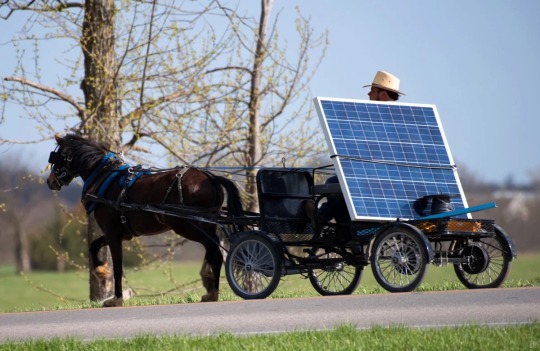
PROGRESSIVE AMISH COMMUNITIES
53 notes
·
View notes
Text
Sandwich compounds are special chemical compounds used as basic building blocks in organometallic chemistry. So far, their structure has always been linear. Recently, researchers of Karlsruhe Institute of Technology (KIT) and the University of Marburg were the first to make stacked sandwich complexes form a nano-sized ring. Physical and other properties of these cyclocene structures will now be further investigated. The researchers report their findings in Nature.
61 notes
·
View notes
Photo


PEOPLE’S POLICY PROJECT
Nordic societies are leaders at the technological frontier.
Through state-owned organizations, as well as the broader public sector, they disprove the belief that governments stifle innovation. Moreover, Nordic governments show how to use new technologies to solve the biggest social and environmental problems while ensuring the disruptions and gains of innovation are distributed fairly.

The Nordic experience with technology differs vastly from that of the United States.
For all its world-leading firms and universities, the US has often failed to convert its innovation into meaningful improvements in Americans’ lives. Compared to the Nordics, as well as several other countries in Europe and Asia, US economic growth per hour worked has been mediocre over the last several decades. Most of that growth has flowed to the rich, limiting the country’s ability to improve rates for life expectancy, child and maternal mortality, suicide, depression, and poverty—all metrics where the US fares poorly against its peers. Meanwhile the US has continued to struggle to use its technological might to prevent climate change, relying on a dirty grid and making inferior progress in green energy over the past 50 years.
How the Nordics and the US approach innovation raises important questions about the relationship between technology and the social good. What’s the best way for the state to boost innovation? How can it guide innovation toward socially useful purposes and away from harmful ones? How can we prevent innovation from creating a set of winners and losers that widen inequality and cause long-lasting damage to households and entire communities? And is there an inherent tension in achieving all of these goals?

The fact that the Nordics are both egalitarian and innovative is not incidental.
Sectoral bargaining and unions compress wages across the economy, which reduces inequality while also inducing more creative destruction in the economy. By raising wages for the least-paid workers, the least productive firms cannot afford them and die, while the most productive firms receive big profits from lower wages at the top.
Unproductive firms dying off due to the lack of cheap labor could be disruptive to workers employed at such firms, along with their households and communities. But this is where another element of the Nordic model helps: Robust labor market policies. The Nordics spend by far the most on unemployment insurance, job training, and job placement programs, which protect workers from permanent unemployment, and train and move workers from the least to the most productive firms. This entire process causes average wages and productivity to grow.
The Nordic welfare state, in addition to equalizing distribution of income and keeping poverty low, cushions financial hits, which encourages risk-taking and more welcoming attitudes toward technology in the worksite and society (Pew 2020, Eurobarometer 2012, 2015, 2017, 2020).

State ownership is an especially useful and underappreciated social institution in this model.
For production purposes, the state can support and guide innovation throughout the entire process to ensure innovation serves larger social missions. Compared to private actors, the state has unique powers that benefit socially useful innovation: greater tolerance for risk, more patience for rewards, and more ability to coordinate key actors and to force required systemic change. The productive benefits of state-led innovation can even be seen in the US, with DARPA (Defense Advanced Research Projects Agency) in particular playing a critical role in the advancement of microchips, telecommunications, and more. But the state’s role in US innovation is mostly a limited one: financing early research and development while absorbing most of the risks and allowing private firms to convert the innovation for products for the market. By avoiding ownership, the US government is only able to recapture the value it created in the innovation process via taxes. But taxes are worse at capturing value, since private profits can be hidden, moved, or otherwise escape the arm of the state.
Below, I highlight four cases of state-led Nordic innovation. Together, they bust a number of myths about state ownership and the Nordic model.



Ninety percent of the world’s traded goods travel over the seas.
Maritime travel emits 3% of total greenhouse gas, which is on pace to triple in the next three decades. Making maritime trade more productive and at the same time greener thus looks like a clear social good. At the frontier of such technologies are the governments of Finland and Norway, which are pursuing the development of autonomous electric-powered ships (electric roboships).
In Norway and Finland, government agencies have partnered with private industry to coordinate research and development of roboships. The most noteworthy partnership involves Norwegian state-owned enterprises (SOEs) Yara and Kongsberg. Kongsberg’s technical expertise includes over 50 years of missile technology and 25 years of underwater autonomous navigation. Initial efforts in the 1990s included autonomously mapping the seabed to drill for oil and gas, and later to safely sweep mines. Since then they’ve worked on dozens of autonomous technology projects with partners in and outside Norway.

Kongsberg and Yara’s flagship project is the Yara Birkeland, intended to be the world’s first 100% electric autonomous container ship. In November 2021, the Yara Birkeland launched its maiden voyage in Oslo, with the following two years dedicated to testing before it is legally certified for autonomous container shipping.
Electric roboships fit the mission-oriented, innovative growth strategy of both Yara and Kongsberg. Yara is the world’s largest producer of fertilizer and recently partnered with a Swedish farmers co-op to produce the world’s first fossil-free nitrogen fertilizer. And Kongsberg’s expertise in autonomy on the sea has enabled it to become a leader in offshore wind turbine installation vessels. Kongsberg received a $40 million contract to build the first such vessels for an offshore wind farm in the United States.



The steel industry alone accounts for 7% of global carbon dioxide emissions. The bulk of these emissions come from a blast furnace using coal or other fossil fuels to produce extremely high temperatures. These heat demands exceed offsite electricity delivery capacity, which is why the heavy industry sector is considered “hard to abate.” Instead of burning coal, green steel plants burn green hydrogen to produce iron, which is processed further to produce steel. It’s a highly technical, capital-intensive project of utmost importance. And three Swedish SOEs have joined together to take it on.
Swedish and Finnish SOE SSAB leads the world in producing steel with the lowest emissions, but its goal is emissions-free steel. In 2016, SSAB and the Swedish Energy Agency worked together on a prefeasibility study and launched a four-year R&D project for green steel. A year later SSAB, mining company LKAB (owned by Sweden and the largest shareholder of SSAB), and energy company Vattenfall (owned by Sweden) created the joint-venture company HYBRIT—the world’s first green mine-to-steel company.
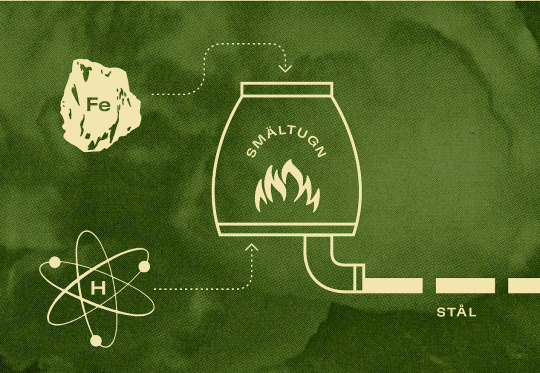
In 2019, trials started for smelting sponge iron in electric arc furnaces. Powered by hydrogen, these furnaces are essential for green steel. A year later, HYBRIT produced the world's first fossil-free iron ore pellets. The company received its hydrogen storage permit in 2021, allowing it to build the onsite green hydrogen storage needed to power its furnaces. In that same year, HYBRIT delivered the first green steel to Volvo, and plans to scale capacity by 2026 to serve the global steel market. As of today, HYBRIT is the only project in the world producing carbon-free steel.
(Continue Reading)

#politics#the left#progressive#progressive movement#peoples policy project#Renewable Energy#innovation#economics#capitalism#socialism#democratic socialism#long post
24 notes
·
View notes
Link
Excerpt from this story from Smithsonian:
Robert Sansone is a natural born engineer. From animatronic hands to high-speed running boots and a go-kart that can reach speeds of more than 70 miles per hour, the Fort Pierce, Florida-based inventor estimates he’s completed at least 60 engineering projects in his spare time. And he’s only 17 years old.
A couple years ago, Sansone came across a video about the advantages and disadvantages of electric cars. The video explained that most electric car motors require magnets made from rare-earth elements, which can be costly, both financially and environmentally, to extract. The rare-earth materials needed can cost hundreds of dollars per kilogram. In comparison, copper is worth $7.83 per kilogram.
The highschooler had heard of a type of electric motor—the synchronous reluctance motor—that doesn’t use these rare-earth materials. This kind of motor is currently used for pumps and fans, but it isn’t powerful enough by itself to be used in an electric vehicle. So, Sansone started brainstorming ways he could improve its performance.
Over the course of a year, Sansone created a prototype of a novel synchronous reluctance motor that had greater rotational force—or torque—and efficiency than existing ones. The prototype was made from 3-D printed plastic, copper wires and a steel rotor and tested using a variety of meters to measure power and a laser tachometer to determine the motor’s rotational speed. His work earned him first prize, and $75,000 in winnings, at this year’s Regeneron International Science and Engineering Fair (ISEF), the largest international high school STEM competition.
Electric motors use rotating electromagnetic fields to spin a rotor. Coils of wire in the stationary outer portion of the motor, called the stator, produce these electromagnetic fields. In permanent magnet motors, magnets attached to the edge of a spinning rotor produce a magnetic field that is attracted to the opposite poles on the spinning field. This attraction spins the rotor.
Synchronous reluctance motors don’t use magnets. Instead, a steel rotor with air gaps cut into it aligns itself with the rotating magnetic field. Reluctance, or the magnetism of a material, is key to this process. As the rotor spins along with the rotating magnetic field, torque is produced. More torque is produced when the saliency ratio, or difference in magnetism between materials (in this case, the steel and the non-magnetic air gaps), is greater.
80 notes
·
View notes
Text
Coal fired boiler manufacturer in india
Thermodyne is a leading manufacturer of coal-fired boilers, known for their reliability, performance, and efficiency. We are dedicated to harnessing the power of coal while minimizing its environmental impact. Our boilers are designed with a relentless focus on efficiency and environmental responsibility. We continually push the boundaries of technology to provide our customers with the most advanced, energy-efficient, and cost-effective solutions. Thermodyne's coal-fired boilers are a testament to our dedication to cleaner and more sustainable energy solutions. For more information contact us at https://www.thermodyneboilers.com/coal-fired-boiler-manufacturer-in-india/

#Coal-Fired Boilers#Boiler Manufacturing#Sustainable Energy#Industrial Boilers#Reliable Boiler#Energy Innovation
0 notes
Text
The Green Revolution: How Eco-Friendly Technology is Changing the Game
Welcome back to GreenLife Insight, your go-to source for all things eco-conscious living! In our previous blogs, we delved into the healing wonders of ecotherapy and offered you 10 simple ways to kickstart your sustainable journey. Today, we're diving headfirst into the world of eco-friendly technology and how it's reshaping our planet for the better.
The Age of Eco-Tech
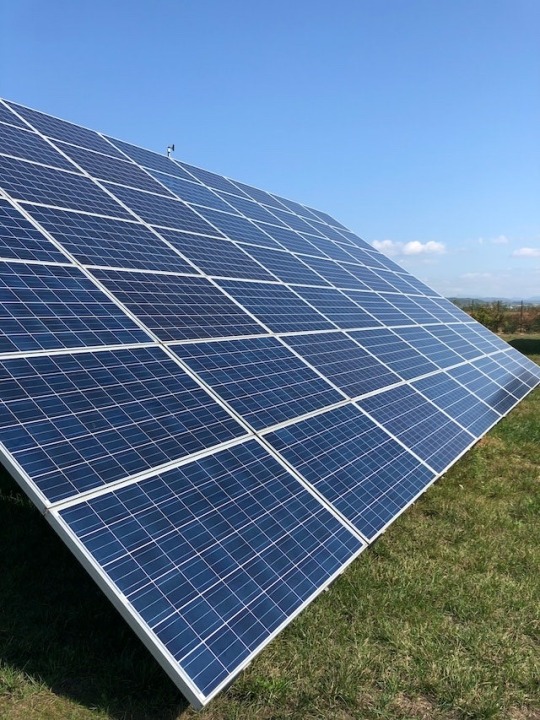
Solar panels have become a symbol of clean energy and reduced carbon footprint.
In the past decade, we've witnessed an incredible surge in eco-conscious technology. From solar panels adorning rooftops to electric vehicles silently gliding through our streets, the age of eco-tech is upon us. It's not just about gadgets; it's a movement that promises a greener, healthier future for our planet.
Solar Energy: Powering the Sustainable Way

Solar farms are harnessing the power of the sun to generate clean energy.
Solar energy is at the forefront of this revolution. Solar panels, which convert sunlight into electricity, have become increasingly accessible to homeowners and businesses alike. They reduce our reliance on fossil fuels, lower electricity bills, and help combat climate change.
Electric Vehicles: Driving Towards a Greener Tomorrow

Electric cars are not only efficient but also eco-friendly, producing zero tailpipe emissions.
Electric vehicles (EVs) are another key player in the eco-tech revolution. They produce zero tailpipe emissions, reduce air pollution, and are quieter than traditional cars. With advancements in battery technology, range anxiety is becoming a thing of the past.
Smart Homes: Effortless Sustainability

Smart homes use technology to optimize energy consumption, reducing waste.
The concept of smart homes is also gaining traction. These homes use technology to optimize energy consumption, reducing waste and lowering utility bills. From smart thermostats that learn your preferences to energy-efficient appliances, every aspect of daily life can now be eco-conscious.
The Power of Sustainable Innovation

Innovators are continually developing eco-friendly tech solutions to combat climate change.
Innovation is the driving force behind this green revolution. Engineers, scientists, and entrepreneurs are constantly developing new solutions to combat climate change. From wind farms to biodegradable materials, the possibilities are endless.
Join the Movement
The green revolution is in full swing, and you can be a part of it. Embrace eco-friendly technology, reduce your carbon footprint, and help preserve the planet for future generations. Stay tuned to GreenLife Insight for more insights into sustainable living and the latest in eco-tech.
Remember, the future is green, and together, we can make a world of difference.
---
I hope you enjoyed this blog post about the exciting developments in eco-friendly technology. If you have any questions or would like more information about any of the topics discussed, please feel free to leave a comment below. Your feedback and ideas are always welcome! Stay tuned for more GreenLife Insight blogs coming your way soon.
#echotech#green#solar energy#electric vehicles#life#sustainability#innovation#renewable resources#ecofriendly
9 notes
·
View notes
Text
IMN Business Development

IMN Business Development / CN-GB-DE-FR-RU-IT-ES-HU /
日安 * Good afternoon * Buenos días * Bonjour * Bom dia * Guten tag * Добрый день * Buon giorno * こんにちは * İyi günler * Selamat siang * नमस्ते * Goeiedag * Καλημέρα * نهارك سعيد * Sabah el fol * Dzień dobry * Bonan tagon * Selamat sore * Jó Napot *
Welcome! We're glad you're here!
First of all we would like to thank everyone for their cooperation and attention, connections from all over the world. Business relationships, projects, business proposals, investing, trade. Everything all together on these spot.
Great things are achieved through continued persistence and dedication.
Free information and advice please contact us with confidence. Business development together. Wish you best of luck!
Information: IMN Business and Investment Opportunities
#investment#projects#business#finance#marketing#sales#market#property#renewable energy#innovation#trade#financial planning#business development#business opportunity#export#business news#import#environment#economy
6 notes
·
View notes